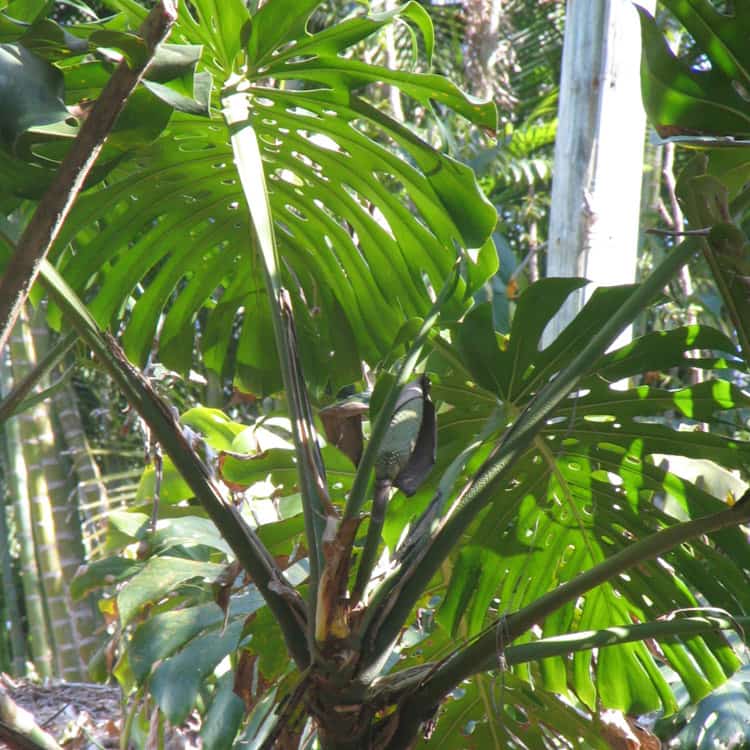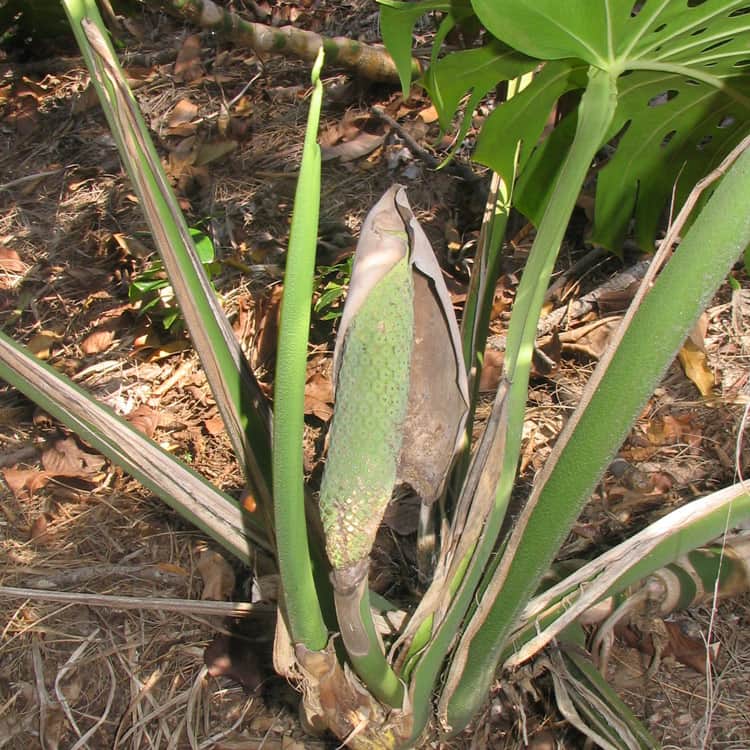Warning
Seek urgent medical attention if lips or tongue become swollen or of there is difficulty breathing or swallowing.
Description
An ornamental climber, grown either as a garden plant or a pot plant. This straggling climber will often have roots hanging down from the stems.
The flowers are very small and crowded onto a spike or spadix measuring 20 to 25cm in length, which is surrounded by a hooded white bract or sheath, called a spathe, to 30cm long.
The leaves are rounded in shape, with perforated segments throughout the leaf, usually between the margin and the mid-vein. The leaf is usually dark green in colour, measuring 25 to 90cm long and 25-75cm wide.
Toxicity
Symptoms
All parts of the plant contain calcium oxalate crystals which if eaten or chewed can cause immediate burning pain, and swelling of the lips, mouth, tongue and throat. Swelling may cause copious salivation and difficulty breathing, swallowing or speaking. Nausea, abdominal pain and intense gastric irritation rarely occur. The fruit is considered edible when ripe but may cause rapidly developing urticaria or hives, a transient swollen, itchy rash.
Images


Details
Common name: Fruit salad plant
Botanical name: Monstera deliciosa
Other common names: Swiss-cheese plant, ceriman
Family: Araceae
General description: An ornamental climber, grown either as a garden plant or a pot plant. This straggling climber will often have roots hanging down from the stems.
Flowers: The flowers are very small and crowded onto a spike or spadix measuring 20 to 25cm in length, which is surrounded by a hooded white bract or sheath, called a spathe, to 30cm long.
Leaves: The leaves are rounded in shape, with perforated segments throughout the leaf, usually between the margin and the mid-vein. The leaf is usually dark green in colour, measuring 25 to 90cm long and 25-75cm wide.
Fruit/Berries: The green fruit ripen to a cream coloured spike, with segmented portions along the spike. When ripe, the fruit has a taste reminiscent of bananas and pineapple.